The island state of Australia, located 300km off the mainland, on the southern side, Bass Strait, has a similar size to Ireland and Switzerland, but it boasts more iconic locations and hidden treasures than any holiday could.
There are many options for those who love luxury and nature, from tranquil areas of wilderness to more populated parts of the coast to charming villages to bustling cities.
Before you head out to the deep blue, make sure to check out our list of the top 10 things in Tasmania.
1. CRADLE MOUNTAIN – LAKE ST. CLAIR NATIONAL PARK
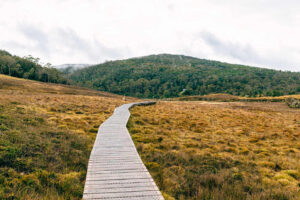
This idyllic spot in the north-west corner of Tasmania is located in the heart Tasmanian Wilderness World Heritage Area. It boasts remarkable natural beauty, ranging from the wild alpine pastures that shade the area to the sharp skeletal mountain peaks.
Cradle Mountain is a popular spot on the Apple Isle that is perfect thanks to sustainable tourism. It boasts icy lakes formed by prehistoric glaciers, ancient rainforests beneath centuries of moss and rushing rivers that run through deep valleys.
It is a place that can be enjoyed throughout the seasons: snowy white in winter, covered with wildflowers and vibrant spring colors during spring, scorched by the southern sun during the summer. There are also a network of walking trails with excellent hikes, ranging from just a few hours up to several days.
There is a lot of wildlife here, including quolls and platypus, wombats, echidnas, wombats and black currawong.
The Tasmanian Parks & Wildlife Service website states that the “magic” of Cradle Mountain will “captivate”.
2. MUSEUM OF OLD AND NEW ART (MONA).

The most iconic address for art in Hobart was first opened in January 2011. It featured annual events such as Dark MOFO, a calendar of concerts and an extravagant schedule of avant-garde exhibits.
This modern architectural gem is located on the banks the Derwent River. The works displayed across the three levels underground galleries, Australia’s largest private museum, will charm, challenge, and captivate visitors. If you are fond of architectural masterpieces then you can check out travel information here for inspiration for your future holidays.
David Walsh founded MONA as a place to store his private collection. It’s been described by him as his “playground for experimentation” and includes two wineries, a brewery, a variety of places to eat and drink, including The Source Restaurant, which is known as “a temple of seasonal Tasmanian food”, luxury accommodations, and a library.
3. TAMAR RIVER WINES REGION
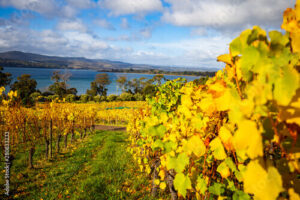
Australia has a wealth of wine regions. The Tamar Valley is located close to Tasmania’s north coast and just a stone’s throw away from Launceston. This hidden gem houses more than 30 vineyards that produce premium cool-climate varieties.
Josef Chromy Wines may be the most well-known, but it is only one address in the valley. It is located 60km from the Bass Strait beaches and offers wineries that range from rustically rural to sophisticated to state-of the-art. They also produce aromatic whites such as pinot noirs and chardonnays.
It is a joy to drive to the Tamar Valley. Visitors are encouraged to stop at various lookouts, take a detour down side streets to enjoy the scenic beauty of the area, and stop at any of the charming hamlets, where the locals warmly welcome guests.
4. TASMAN PENINSULA
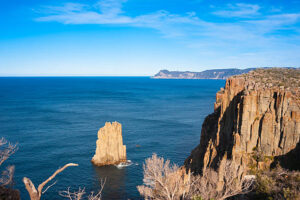
The Tasman Peninsula is not just about the Port Arthur Historic Site. The land on Eaglehawk Neck’s southern side contains spectacular storm-battered coastlines, an innovative food scene, and a vibrant agriculture industry.
It is clear that the former penal settlement should be included in every itinerary. A self-guided walk or hosted tour of this peaceful precinct, including across the waves towards the Isle of The Dead (which was colony’s cemetery island), will give you a vivid picture of the early days of European discovery.
Travellers shouldn’t be content to stop at the Tasman National Park. This is where the fierce Southern Ocean breakers crash into Australia’s highest seacliffs. The hardy coastal heath extends right to the edge.
The sanctuary houses tracks that lead walkers to dolerite spires, which rise up to 300m above the Tasman Sea. The paths to Cape Hauy or Cape Raoul are ideal for shorter hikes. The Three Capes Track is a multi-day tramp that was unveiled in 2015 and has already received international acclaim.
You can walk the Tessellated Pavement at Eaglehawk Neck or visit Port Arthur Lavender Farm, where you will learn how a local family has transformed their land after another drought. Finally, stop at Bangor Vineyard Shed for some delicious local flavours.
5. FRANKLIN–GORDON RIVES NATIONAL PARK
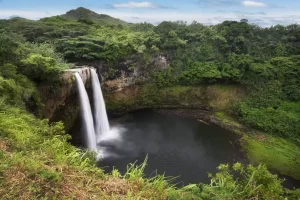
People who were interested in current affairs in the 1970s will recall the fight against the Franklin Dam. This campaign is remembered as one of Australia’s most important environmental campaigns. The plan was eventually abandoned to preserve this beautiful destination.
The Gordon River, a dark-tannine-stained river that flows through the Tasmanian Wilderness World Heritage Area is today the state’s jewel. It mirrors the towering trees on its banks and acts as a sentry.
Franklin-Gordon Rivers National Park houses Tasmania’s famed Huon pines. These soft-wood trees were once used in furniture-making and boat-building. Gordon River cruises allow travellers to walk in the shadows giants that only grow here.
6. BAY OF FIRE
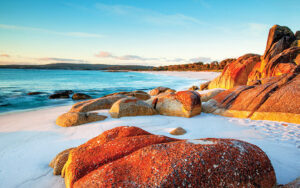
The Bay of Fires is famous for its vivid white sand and the vibrant green of the water. It also has orange lichen-coated rocks that transform every spot into a picturesque scene.
To enjoy the tranquil beauty of the Bay of Fires sunrise before it gets too dark, get up early and take a sightseeing cruise.
You will be able to see the dolphins and seals from the area, as well as wander the coastal outcrops. Take a picnic and enjoy the Binalong Bay viewing platform.
It could be a lifetime experience for any kind of traveler during any season of the year.
7. CATARACT GORGE
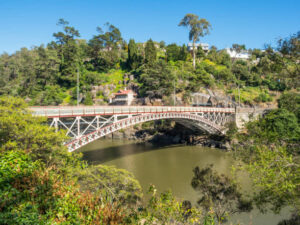
Although The Gorge, as it is known to locals, is not a hidden treasure, it can still be considered a city centre secret by locals and tourists alike. It was created in 1890s through footpaths that were first constructed into a valley formed by the South Esk River as the river heads towards the Tamar Valley.
The Cliff Grounds are located on the northern side of the basin. Here peacocks can roam through Victoria-era gardens. While the south reaches of the pool are wild and have native bush around them, the area is perfect for swimming between November to March.
You can ride the longest single-span chairlift in the world across the natural chasm. Follow the Zig Zag Track up to one of the high lookouts or the route to Duck Reach, where Australia’s first municipal hydroelectric plant still stands.
8. RICHMOND
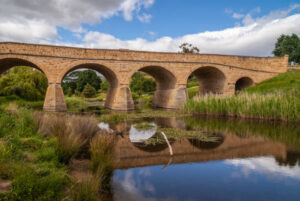
Richmond, a historic hamlet located 25 km from Hobart and established shortly after European settlers arrived at Risdon Cove on 1803.
It is now a living, open-air museum that documents the early days of the address’s use as a military outpost.
Many of the village’s buildings were built by convicts who worked in the local penal colony.
Richmond Goal, which is a beautifully preserved property on Bridge Street, and St John’s, which was built between 1837-1859 to make it Australia’s oldest Roman Catholic Church, are other historical highlights.
9. FREYCINET National Park

Freycinet National Park is a must-see on any Apple Isle visit.
This east coast destination is home the curving white beach and transparent turquoise waters of Wineglass Bay, as well as the Hazards pink granite peaks and bleached boulders supporting the coastal peaks.
It is quite a trek to Wineglass Bay Lookout, but it is well worth it to see one of Tasmania’s most Instagrammed views. Those who want to walk that famous stretch can either stroll across the Hazards, or take a cruise from Oyster Bay, which passes empty bays, before arriving at the sugar-white beach.
If you’re looking for somewhere to stay a while, there are plenty of options available – from peaceful camping areas to luxurious lodges and eco-friendly cabins – all around Oyster bay.
You can snorkel or dive to see the wildlife below the surface. Or you could take a picnic to the beach and go kayaking to Moulting Lagoon to spot the black swans.
10. QUEENSTOWN
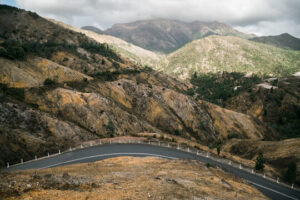
Talk of Tasmania conjures up images of old-growth forests, green beaches and azure water, but this is not the color scheme that awaits visitors heading towards Queenstown.
This community, which is located close to the coast of Tasmania, serves as a gateway into the Tasmanian Wilderness World Heritage Area. It was once a vibrant copper mining town. The wholesale logging that took place at the beginning of the last century scavenged the hills, creating a mysterious rock moonscape with raw and surreal earthy hues.
Mother Nature is showing signs of recovery. However, Queenstown’s scenic drive takes you through a winding road with more than 90 bends. This road continues to tell the story of an era when mining money left a terrible scar in the country.
The historic West Coast Wilderness Railway is located in the town. It offers scheduled half-day and full-day tours along the 35 km of track between Queenstown, Strahan. Underground mine tours and the museum offer more tales from the past.
